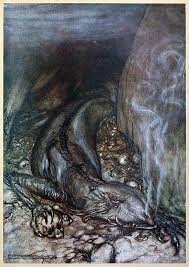Wagner, Gargoyles, Shadow...and the Art of Gurning
 So many people came in and commented on my article last week about Wagner, that I thought I would redirect you to two articles written about what happens when you put ugliness next to beauty. Provided the ugliness doesn't dominate, then in fact by the contrast it affords it can serve to heighten our sense of the beauty of the whole. In the context of visual beauty, Church Fathers wrote about this, monks incorporated it into their manuscript illuminations, baroque artists used it symbolically in their contrast of light and dark and gothic artists incorporated gargoyles into their buildings. As I wrote in response to one person who commented, I am not against all dissonance in music. There is a place for it, I think provided it doesn't dominate in such a way that it becomes the characterizing feature of the music. When used well, stepping in and out of key for example can heighten our sense of a full resolution and the beauty of the whole.
So many people came in and commented on my article last week about Wagner, that I thought I would redirect you to two articles written about what happens when you put ugliness next to beauty. Provided the ugliness doesn't dominate, then in fact by the contrast it affords it can serve to heighten our sense of the beauty of the whole. In the context of visual beauty, Church Fathers wrote about this, monks incorporated it into their manuscript illuminations, baroque artists used it symbolically in their contrast of light and dark and gothic artists incorporated gargoyles into their buildings. As I wrote in response to one person who commented, I am not against all dissonance in music. There is a place for it, I think provided it doesn't dominate in such a way that it becomes the characterizing feature of the music. When used well, stepping in and out of key for example can heighten our sense of a full resolution and the beauty of the whole.
Anyway, here the articles: first a light hearted one called Living Gargoyles - the Medieval Art of Gurning; and second here is a more sober presentation of the idea in Okay, Here's the Serious Article About Gargoyles and John Scotus Eriugina
Above, a gargoyle; below: more Arthur Rackham art; and then a real live gurner - you'll have to read the article if you don't know what this is...and finally one of Goya's black paintings from the 18th century.


